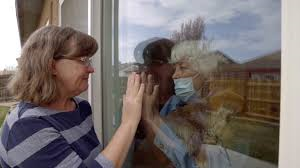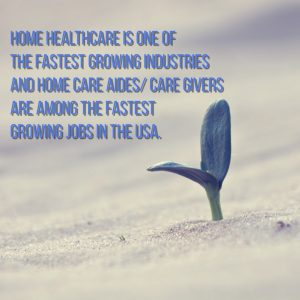As the world is about to mark two years of battling with the COVID-19 pandemic and worldwide efforts to combat the disease have seen some successes, especially on the vaccination front, it has become evident that COVID-19 is more or less here to stay. This forces us in the homecare industry to take a deep look and exactly how COVID-19 has affected and will continue to affect home-based care.
 Home care agencies provide home-based supportive services that can be important alternatives to hospitals and nursing homes, especially during a pandemic, yet home care has often been overlooked in healthcare pandemic planning. Home care focuses on the non-medical services that can help seniors remain healthy at home. These services are often employed when a senior is discharged from the hospital or when they don’t want to move to an assisted living or nursing home. However, COVID-19 has helped prove that home care services are effective at keeping seniors safe and healthy.
Home care agencies provide home-based supportive services that can be important alternatives to hospitals and nursing homes, especially during a pandemic, yet home care has often been overlooked in healthcare pandemic planning. Home care focuses on the non-medical services that can help seniors remain healthy at home. These services are often employed when a senior is discharged from the hospital or when they don’t want to move to an assisted living or nursing home. However, COVID-19 has helped prove that home care services are effective at keeping seniors safe and healthy.
 As doctor’s offices are limiting visits, caregivers can be with patients at home, on the front lines. This care is getting more attention and appreciation from healthcare providers across the country. Nursing homes and assisted living communities have proven to be dangerous amid a pandemic; many facilities have seen outbreaks with devastating consequences. On the other hand, home care patients remain safe, healthy, and isolated at home.
As doctor’s offices are limiting visits, caregivers can be with patients at home, on the front lines. This care is getting more attention and appreciation from healthcare providers across the country. Nursing homes and assisted living communities have proven to be dangerous amid a pandemic; many facilities have seen outbreaks with devastating consequences. On the other hand, home care patients remain safe, healthy, and isolated at home.
 Home care services currently include transportation, medication reminders, personal care, and other non-skilled services. But these services might also expand in the coming years. During COVID-19, some caregivers have been hired in offices or warehouses to check temperatures. They have also helped with grocery and prescription pick-up. We expect to see the caregiver’s role expanding as a result of this pandemic. With this expansion of the caregiver’s role, there is opportunity for growth in the industry, home care businesses are set to be one of the best investments to make in the next 5 to 10 years.
Home care services currently include transportation, medication reminders, personal care, and other non-skilled services. But these services might also expand in the coming years. During COVID-19, some caregivers have been hired in offices or warehouses to check temperatures. They have also helped with grocery and prescription pick-up. We expect to see the caregiver’s role expanding as a result of this pandemic. With this expansion of the caregiver’s role, there is opportunity for growth in the industry, home care businesses are set to be one of the best investments to make in the next 5 to 10 years.
 Operating during the pandemic presented some challenges for existing home care agencies though. A 2020 survey by the University of Massachusetts Lowell Institute revealed that a majority of agency managers reported that home visit hours decreased because care givers employed by their agency were COVID-19 positive, symptomatic, and/or in quarantine. About 3-quarters of agency managers reported that care givers were concerned about going into homes and being infected by clients and a majority reported a decrease in client visit hours due to care givers not working because they received unemployment or family leave benefits. During the same period, nearly all respondents reported an increase in managers’ time spent developing new policies, procedures, and training, and 2-thirds reported an increase in time spent scheduling.
Operating during the pandemic presented some challenges for existing home care agencies though. A 2020 survey by the University of Massachusetts Lowell Institute revealed that a majority of agency managers reported that home visit hours decreased because care givers employed by their agency were COVID-19 positive, symptomatic, and/or in quarantine. About 3-quarters of agency managers reported that care givers were concerned about going into homes and being infected by clients and a majority reported a decrease in client visit hours due to care givers not working because they received unemployment or family leave benefits. During the same period, nearly all respondents reported an increase in managers’ time spent developing new policies, procedures, and training, and 2-thirds reported an increase in time spent scheduling.
 Aside from the challenge of home care agency managers having to spend more time scheduling, developing new policies, procedure and training as opposed to actually providing home care services for their clients, at the height of the pandemic, managers had to contend with the new and unexpected expense of procuring PPE for their caregivers. Pre-pandemic, only medical exam gloves were typically used during home visits. However, as the pandemic began, agencies provided care to clients with COVID-19 and needed to develop more extensive infection prevention procedures and quickly procure a range of healthcare PPE, including N95 respirators, which were notoriously difficult to acquire in the early days of the pandemic.
Aside from the challenge of home care agency managers having to spend more time scheduling, developing new policies, procedure and training as opposed to actually providing home care services for their clients, at the height of the pandemic, managers had to contend with the new and unexpected expense of procuring PPE for their caregivers. Pre-pandemic, only medical exam gloves were typically used during home visits. However, as the pandemic began, agencies provided care to clients with COVID-19 and needed to develop more extensive infection prevention procedures and quickly procure a range of healthcare PPE, including N95 respirators, which were notoriously difficult to acquire in the early days of the pandemic.
 Despite the COVID-19 patient care provided by home care agencies, early pandemic healthcare guidance, PPE, and educational and training resources were focused mainly on hospitals and nursing homes. As a result, home care agencies spent time adapting guidance issued for facility-based healthcare to home-based care settings. For example, because care givers work remotely in private homes, procedures for storing/donning/doffing/disposing PPE differ from hospitals. When the pandemic occurred, instructional videos, webinars, and written guidance related to respiratory protection and other PPE were developed by government and research agencies for hospital and nursing home personnel but often did not include home health nurses and aides.
Despite the COVID-19 patient care provided by home care agencies, early pandemic healthcare guidance, PPE, and educational and training resources were focused mainly on hospitals and nursing homes. As a result, home care agencies spent time adapting guidance issued for facility-based healthcare to home-based care settings. For example, because care givers work remotely in private homes, procedures for storing/donning/doffing/disposing PPE differ from hospitals. When the pandemic occurred, instructional videos, webinars, and written guidance related to respiratory protection and other PPE were developed by government and research agencies for hospital and nursing home personnel but often did not include home health nurses and aides.

In the early phase of the pandemic, home care agencies experienced new, substantial challenges in order to maintain services while keeping clients and care givers safe from COVID-19. Specific needs to improve future pandemic resilience include more complete information on the infection status of clients; ready access to affordable PPE; and guidance, tools, and training from government and research agencies that are tailored for the industry and its workforce. However, to end on a more positive note, the future does look bright.
